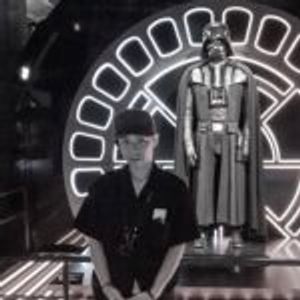
In September, “Riverside Story Shibuya River Edition” was held at Kata in Ebisu, Tokyo. The project is run by singer xiangyu and designer of fashion brand Perminute, Yoshiki Hanzawa. With students from Bunka Fashion College, the pair made clothes out of trash found in the river for their fashion presentation.
The two say making clothes out of trash found in the river isn’t primarily about environmental issues. To learn more about their purpose, we spoke to them about the process and emotions behind Riverside Story.
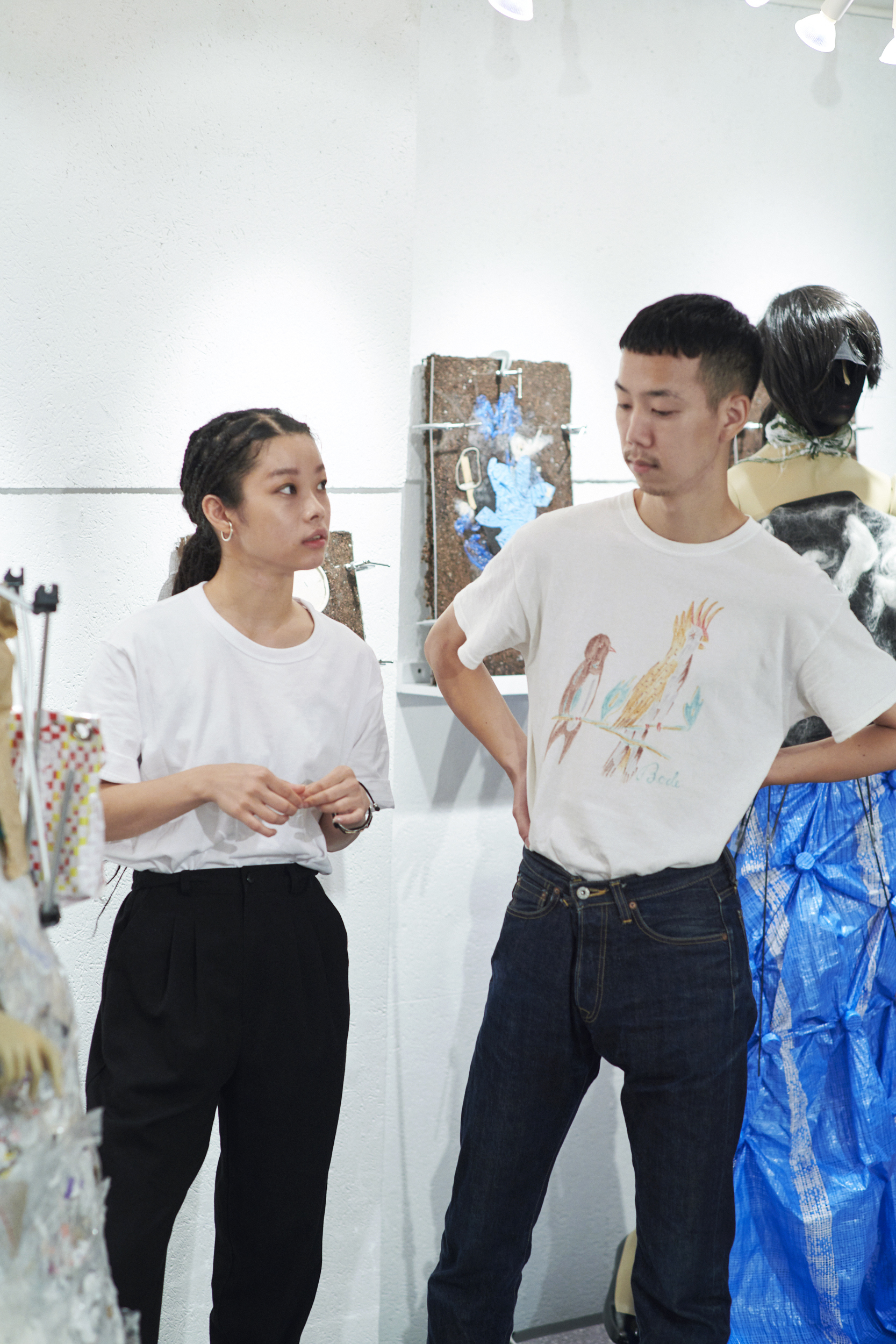
Left→Right
xiangyu
xiangyu is a singer. She was approached by Dir.F, the director for Wednesday’s Campanella, at her own fashion presentation and began her career as an artist in 2018 with the support of Kenmochi Hidefumi, the producer of the same music group. xiangyu began developing her sound with dance music. In 2019, she made her debut with EP The First ○○ Picture Book. “Milano Sando A,” released in 2021, gained momentum and became Doutor’s official jingle. On top of her career as a singer, xiangyu works in other fields, such as starring in the film Hotobori Melt Sounds.
Twitter:@xiangyu_fish
Instagram:@xiangyu_dayo
Yoshiki Hanzawa
Yoshiki Hanzawa is a fashion designer. He founded the womenswear brand Perminute in 2016. The brand’s concept is to create new forms of life and clothes through unique experiments and processes. Perminute made its runway debut at Amazon Fashion Week Tokyo Spring/Summer 2018. Hanzawa is also active outside of his brand. He has also curated special exhibitions at Tav Gallery and has done fashion direction for Parco’s advertisements. He was nominated for The 15th Best Debutant Award by The Men’s Fashion Unity. Currently, Perminute doesn’t follow the fashion calendar, as it comes out with new collections of its own accord.
https://perminute.net
Instagram:@_perminute_
Learning about the city and its people from trash
——One of you is a singer while the other is a designer. How did you two meet?
xiangyu: We’re from the same graduating class of Bunka Fashion College, but we only had classes together in our senior year.
Yoshiki Hanzawa (Hanzawa): We had a lot of mutual friends, but we barely talked to each other until after we graduated.
xiangyu: I knew about him before we started taking the same classes. Yoshiki was an excellent student, so he was well-known within our school for making incredible things and winning prizes.
Hanzawa: I also heard a lot about xiangyu from my peers. We didn’t hang out after school while we were students, but we started hanging out a lot once xiangyu debuted as an artist.

——What was the catalyst for that?
Hanzawa: It was going to your first show, right?
xiangyu: Yeah. He came to my first-ever live show. There were only two people in the audience, and Yoshiki was one of them (laughs).
Hanzawa: We started hanging out because of that, and she wore my clothes in her music video.
xiangyu: The song is called “31.” I also wear his brand’s clothes for my shows. I wear Perminute garments for special occasions, like when I made a guest appearance for Shuta Hasunuma Philharmonic Orchestra.
xiangyu 「31」
——You two combine your work despite being in different fields. How did Riverside Story come about?
Hanzawa: We always text or call each other to talk about things we find interesting. Around February of this year, xiangyu nonchalantly told me that she was interested in the relationship between people, the city, and the trash in the river.
——Why were you interested in that?
xiangyu: The year we graduated from Bunka (Fashion College), hanami and trash were highlighted as one social issue, so I thought about making clothes from waste.
——So, you did what you now do with Riverside Story.
xiangyu: It was just for fun; I wanted to make clothes, wear them, and take photos. I went to Ueno Park and Yoyogi Park and saw that the number of people enjoying hanami was drastically different. The amount of trash differed too. The idea that different parts of the city have distinct types of people and waste stuck with me.
I spotted a river while I was on a walk in Shibuya in February. I saw various types of trash in the river and thought I might make an exciting discovery if I looked into it, just like the difference in trash between Ueno Park and Yoyogi Park. So, I called Yoshiki without putting too much thought into it. I didn’t even think about making clothes for a fashion presentation at that point. I was just like, “Won’t it be fun?”
Hanzawa: She always reaches out to me like that (laughs). I was like, “Well, I guess we should go for a walk, then.” I didn’t know that the Shibuya River existed, so I went there out of sheer curiosity. I looked it up and discovered that the name of the river changes midway and flows to the Odaiba ocean from around Hamamatsu.
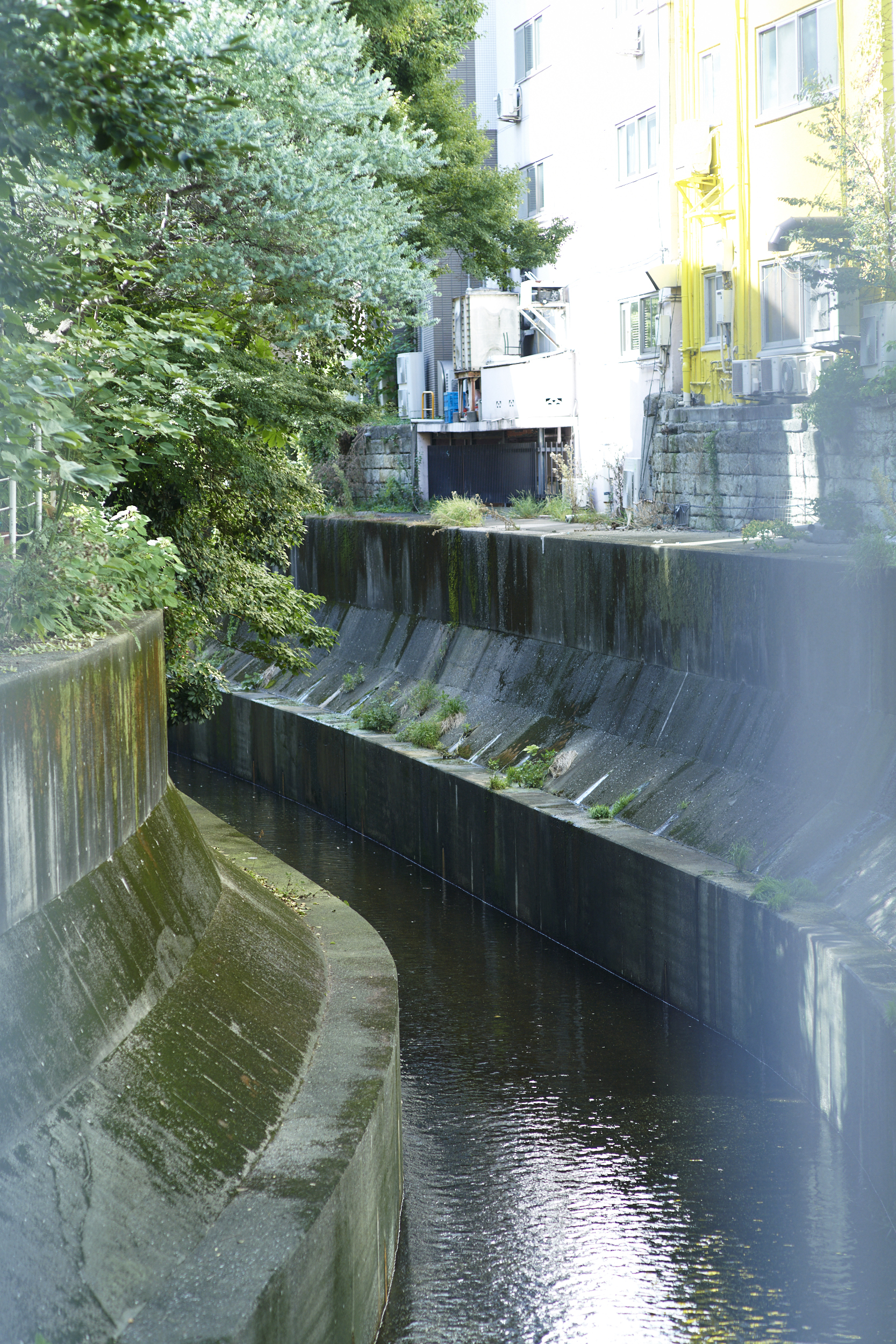
Shibuya River
——What was it like walking along the Shibuya River for the first time?
Hanzawa: The area closer to Shibuya station was cleaner than I expected, but the closer the river got to the ocean, the more piles of trash stood out. It was interesting to learn about that after I walked along the river.
But then I realized the surrounding area of Shibuya station wasn’t clean. The trash was hidden. I think we subconsciously litter in areas that are hidden when there’s no visible trash lying around. In areas close to the ocean, people overtly dump their waste. That became clear as we went out to do some field work twice or three times.
You’ll see a lot of trash from convenience stores in Shibuya and Ebisu. The size of waste grows the closer you get to the ocean. I saw bundles of cardboard boxes, foot massage machines, bicycle wheels, and screens.
xiangyu: You could feel a deliberate intention to throw things away once you saw how big the junk was.
——That’s more than littering. It’s illegal dumping.
Hanzawa: Most of the trash in Shibuya is several weeks old, but the ones near the ocean have been there for years.
xiangyu: Big stations have sanitation workers, and cities change and are renewed, so they look clean on the surface. But all the trash is hidden. Trash stands out more in smaller towns because they aren’t as well-maintained. The state of trash changed depending on the city, even though it was the same river.

Cleaning the river is a byproduct of the project
——At one point did you decide to make clothes out of the trash you collected?
Hanzawa: We already had decided on doing a project out of trash to put on display, so we decided to go with making clothes since that’s a skill we have. But we didn’t know what materials we would collect and how they would function. We wanted to play with the materials and become familiar with trash, so the first thing we made was the artwork, which served as the main motif.
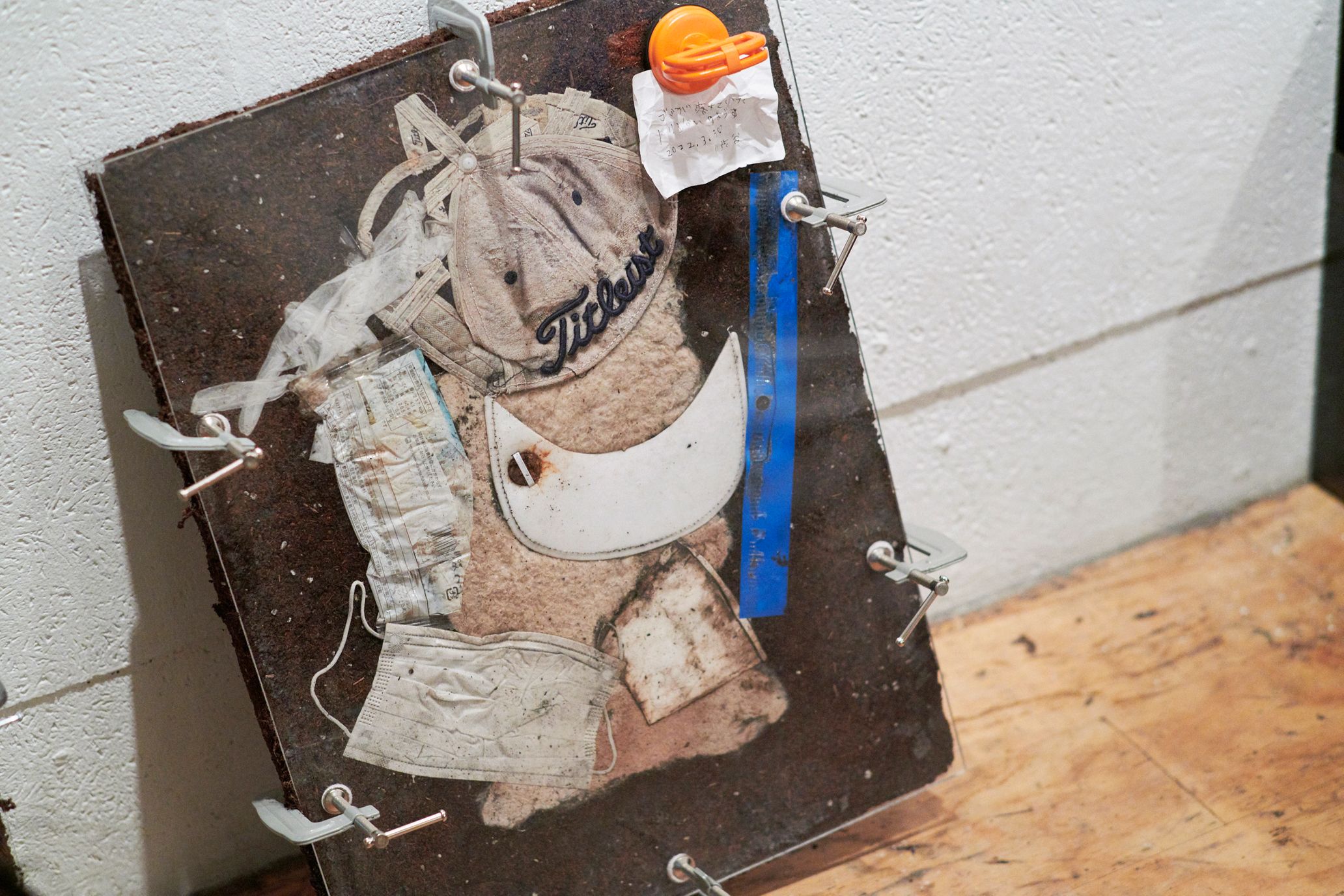
The main motif of “Riverside Story Shibuya River Edition”
xiangyu: Yeah. The artwork came before the clothes, and we started to get an idea of what we wanted to make. That’s how the direction of the project was determined.
——Students from Bunka Fashion College participated in the project. How did that happen?
xiangyu: To use the trash as materials, we had to wash and dry them. At first, we did that at my office, but the trash accumulated, so we needed a bigger space. We talked to a teacher at Bunka, and they provided us with a space because they thought the project was interesting. Plus, they suggested getting students involved. In the department we graduated from, there’s a class where students collaborate on something with people outside the school. The school incorporated our project in that class. Around 20 students participated in it.
——What did the students do, specifically?
xiangyu: We washed the trash we picked up, transformed them into materials, came up with designs, and made clothes together.
Hanzawa: xiangyu and I took charge of this project, but we didn’t work hierarchically. We all got our hands dirty and brainstormed together.
——Each person played a part in the project.
xiangyu: Usually, you would select fabrics to actualize a design based on a theme, but we couldn’t do that with this project. We utilized the things we picked up, so we made what we could with what we had. Thinking about what kind of clothes you can make after you come up with materials is the reverse order. It was fun to develop them.
Hanzawa: At first, I thought we could only make three or four pieces, but we ended up making six looks because we had a lot of ideas. We didn’t decide on a final destination, so this fashion presentation might not be in its complete form.
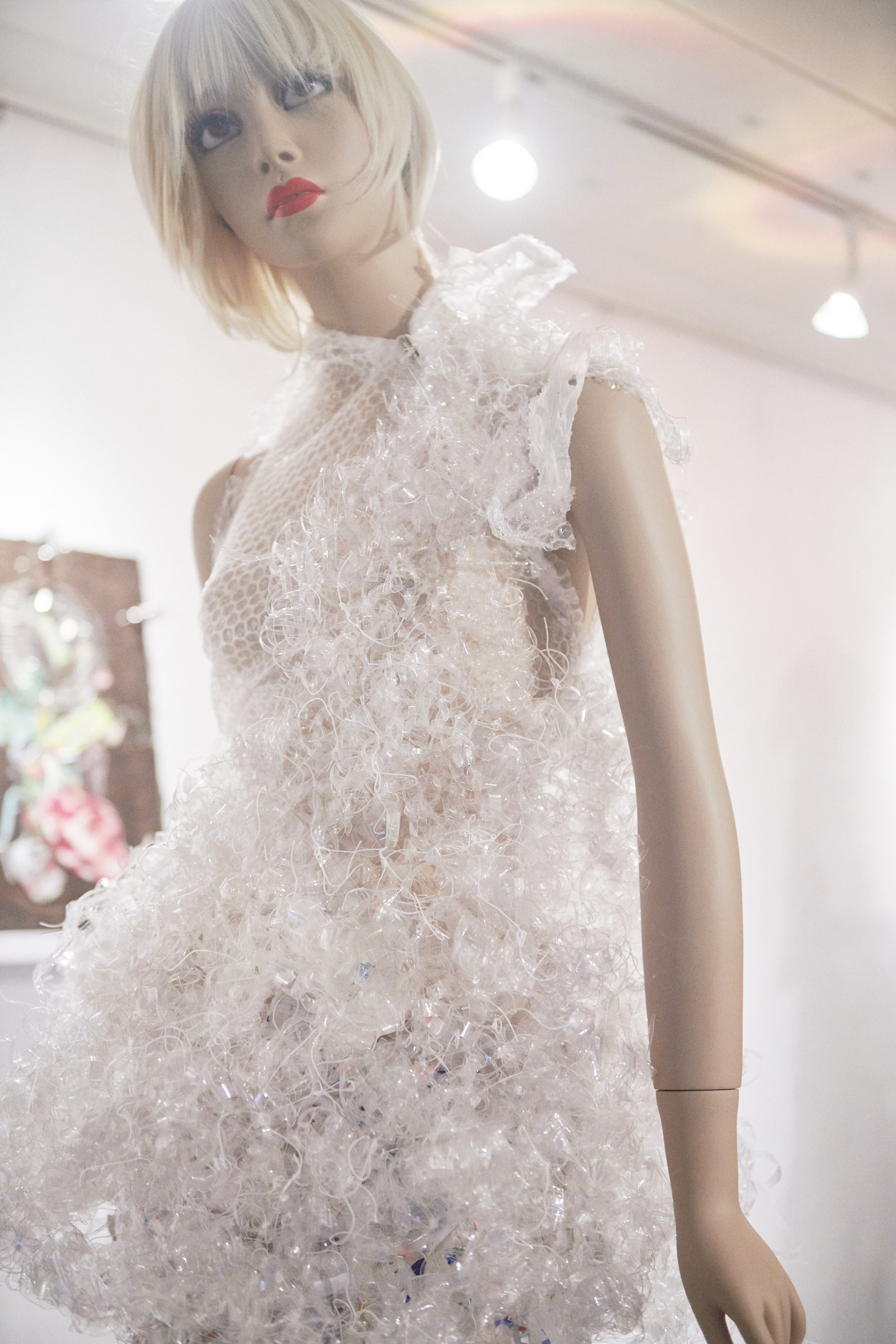
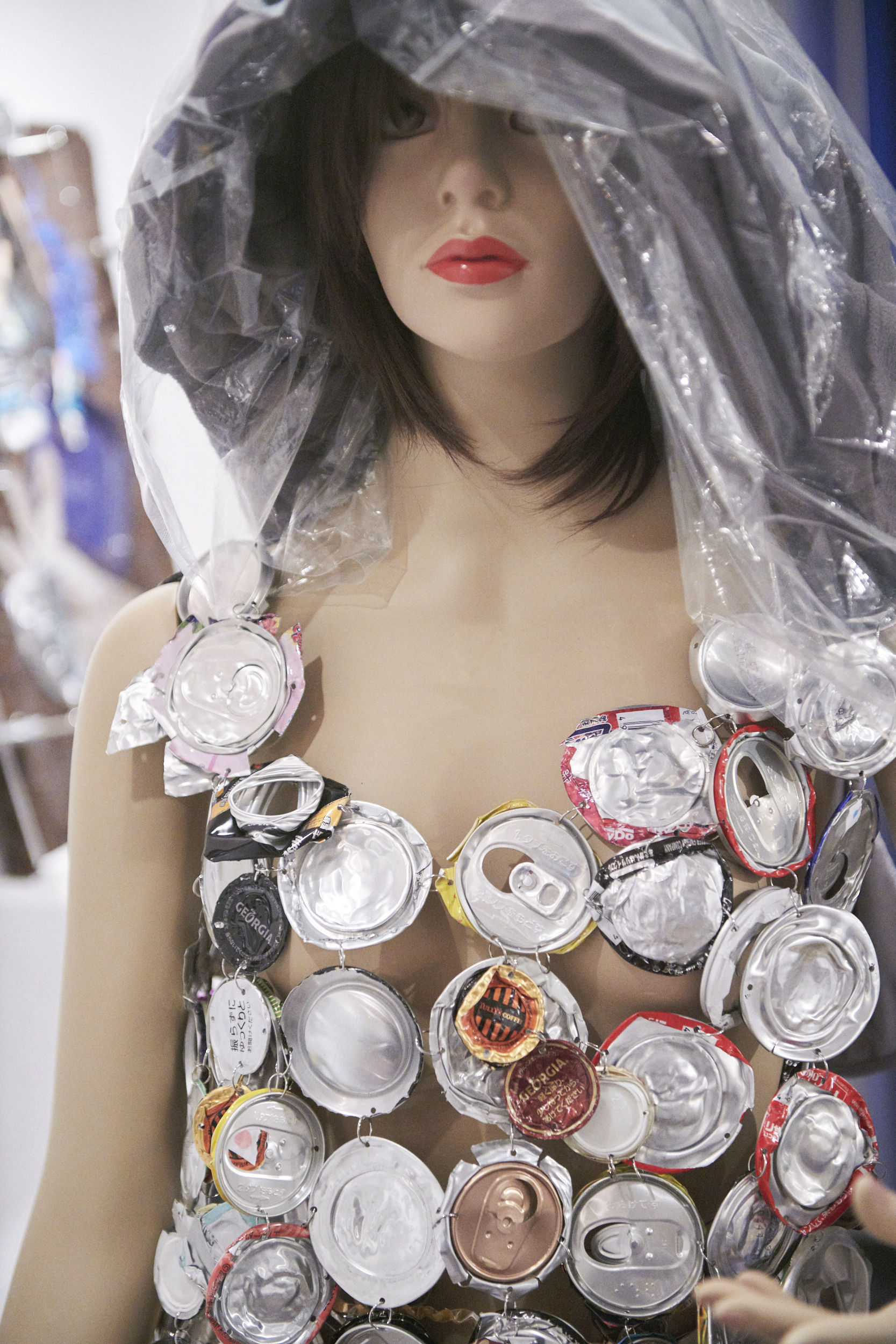
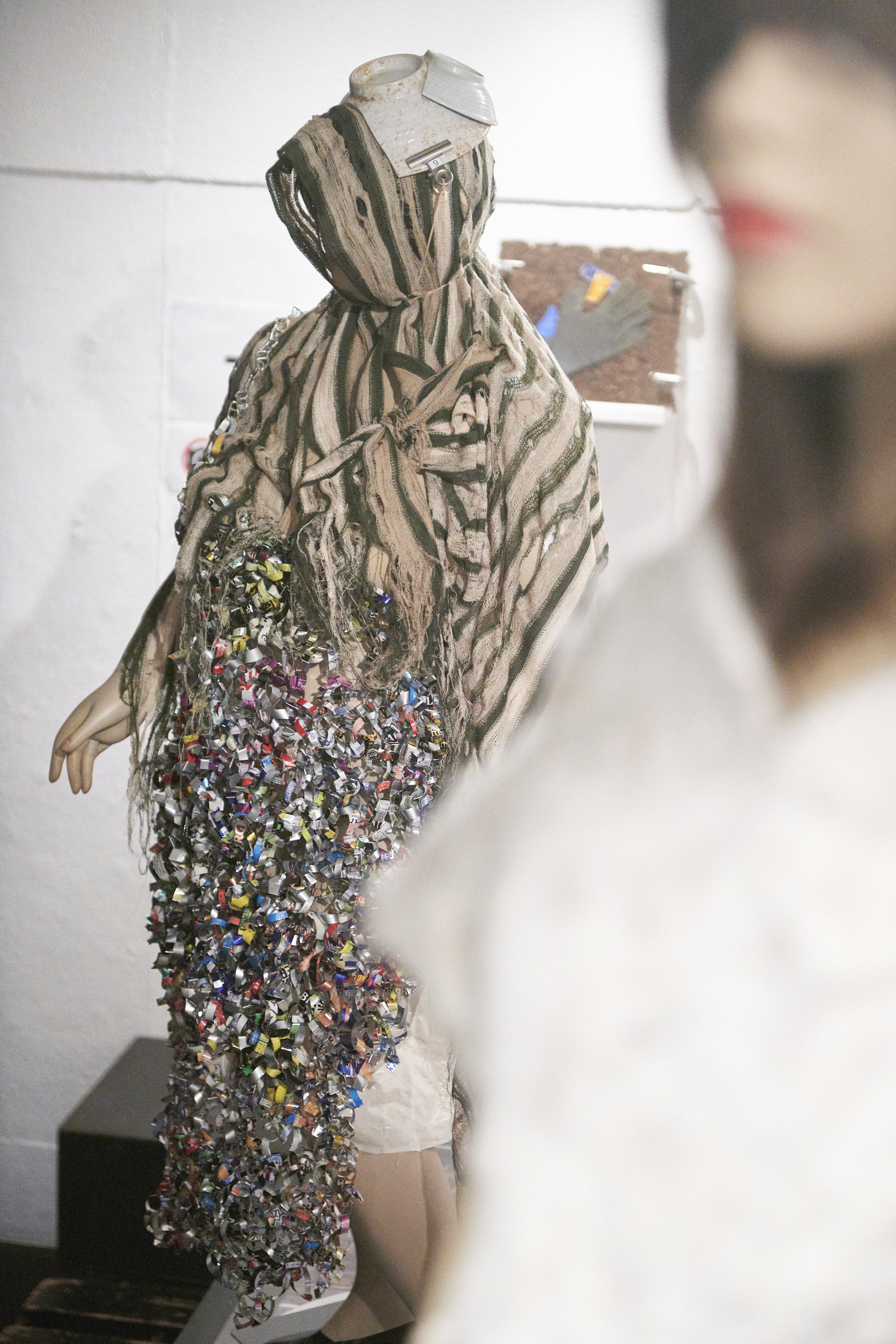
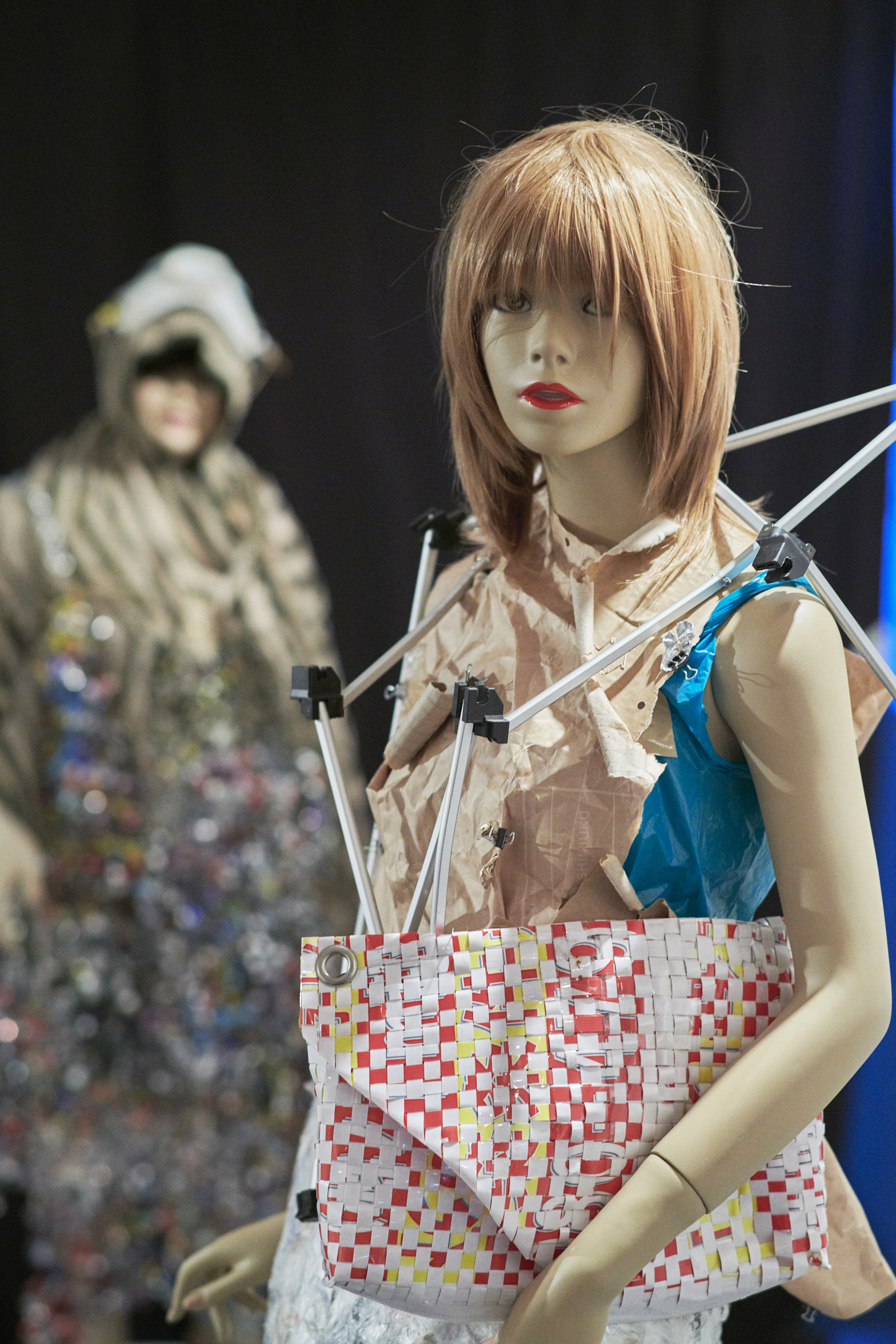
A look at “Riverside Story Shibuya River Edition”
——It was impressive how the clothes were so well-made. It was hard to tell they were made of trash.
Hanzawa: We were being intentional about making detours during our process. At the heart of this project was changing our perspective on trash. We worked on extra steps to grow fond of the material.
You can attach plastic bottles, which could look like clothes. But once you break that apart, it’ll turn back into just junk. So, we transformed them into strings and braided them. We also broke them into pieces and put them back together. After spending a lot of time and effort, the plastic bottles became more than plastic bottles. I realized you learn things once your perspective on an object changes once you grow attached to it.
xiangyu: We tried our best to break the trash down so we could create materials that looked like something else. We felt it wasn’t the right choice for this project to ask a factory to develop recycled materials for us to use for clothes.
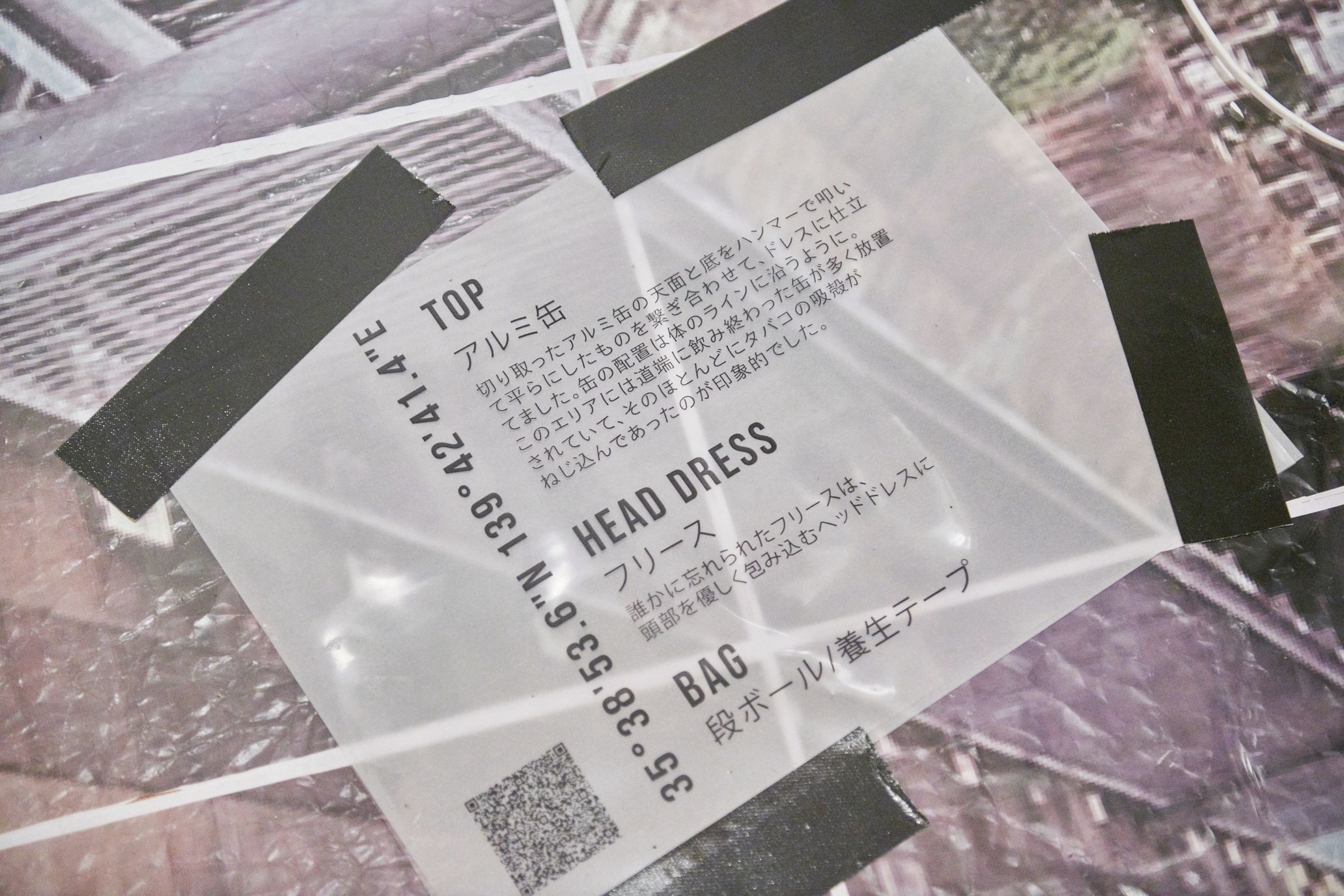
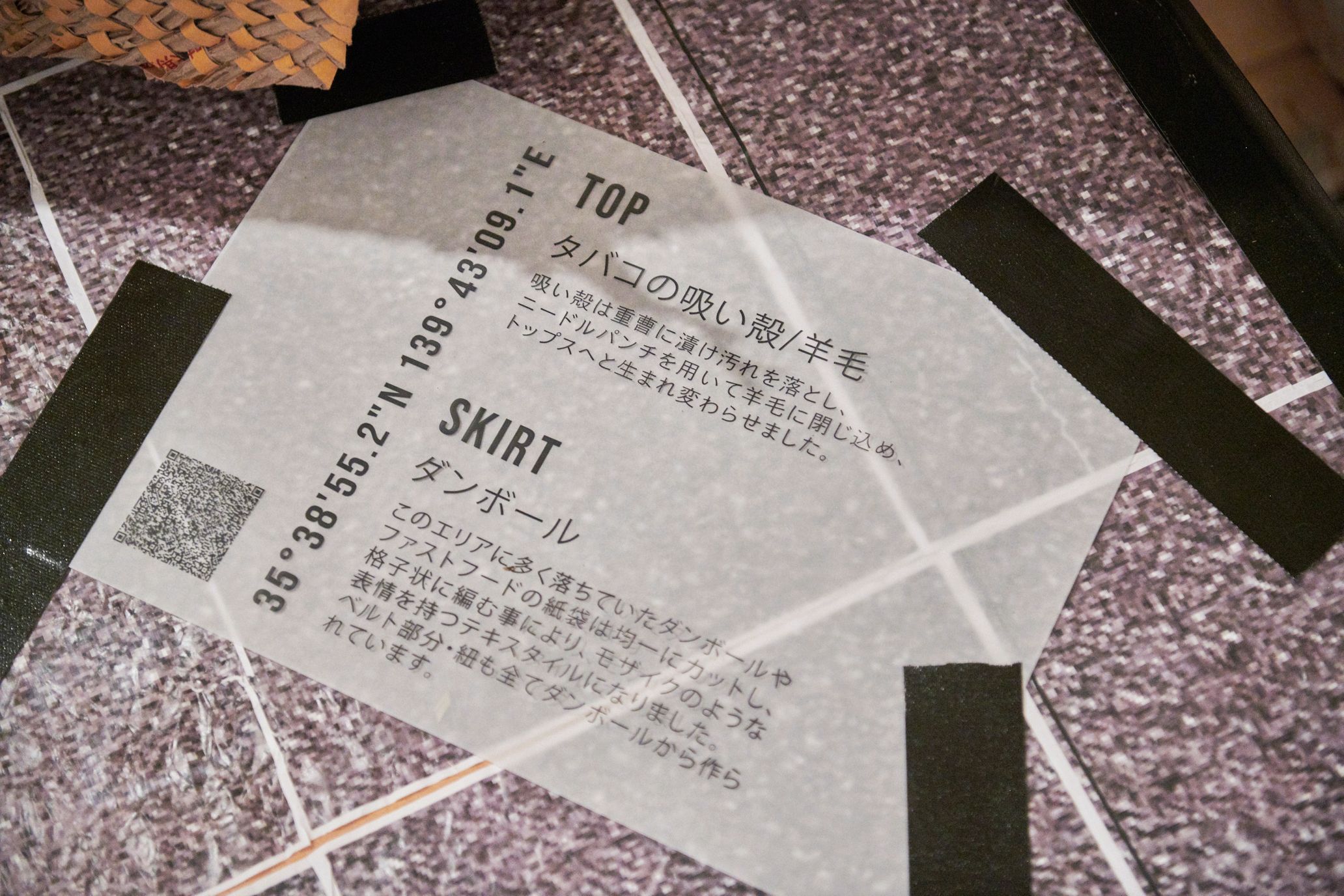

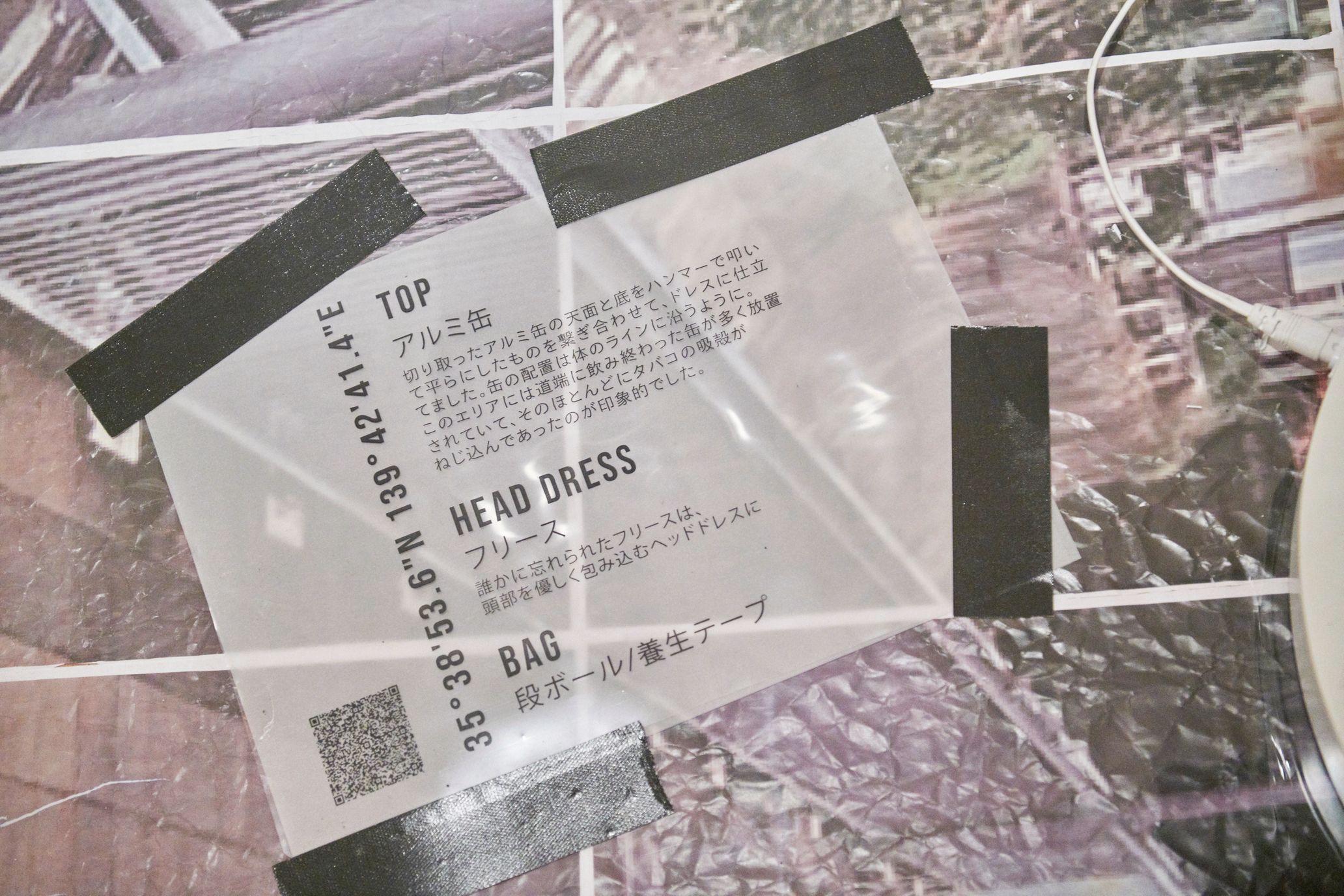
A look at “Riverside Story Shibuya River Edition”
——You gave value to something worthless by spending time and effort.
Hanzawa: I believe the environment becoming more beautiful due to cleaning the river is a byproduct of this project. The project is more about the importance of feeling moved once you put effort into things people don’t care to look at and change their value. It’s not like you can buy the project’s clothes or wear them daily. The most satisfying thing about this project was seeing people feel something once they witnessed how discarded trash could “return home” to the human body, so to speak.
——This project must’ve felt fresh for you two.
Hanzawa: I feel like my relationship with fashion has changed since we made clothes in a way we hadn’t done before. It was challenging not being able to complete clothes according to plan, but that was also a positive thing. It was fun to make clothes that could be analyzed from multiple angles. We could think about clothes holistically, such as how to present them rather than simply make them.
xiangyu: My main job is as an artist, but I’m the type that has many interests. I want to do it all. This project reassured me that I could find the right balance for myself. I worked on this project while taking a break from music and vice versa. My hands were constantly moving, so I had more ideas for my music. There were many discoveries from working with the Bunka students. They created materials and stylings that I wouldn’t have thought of myself.
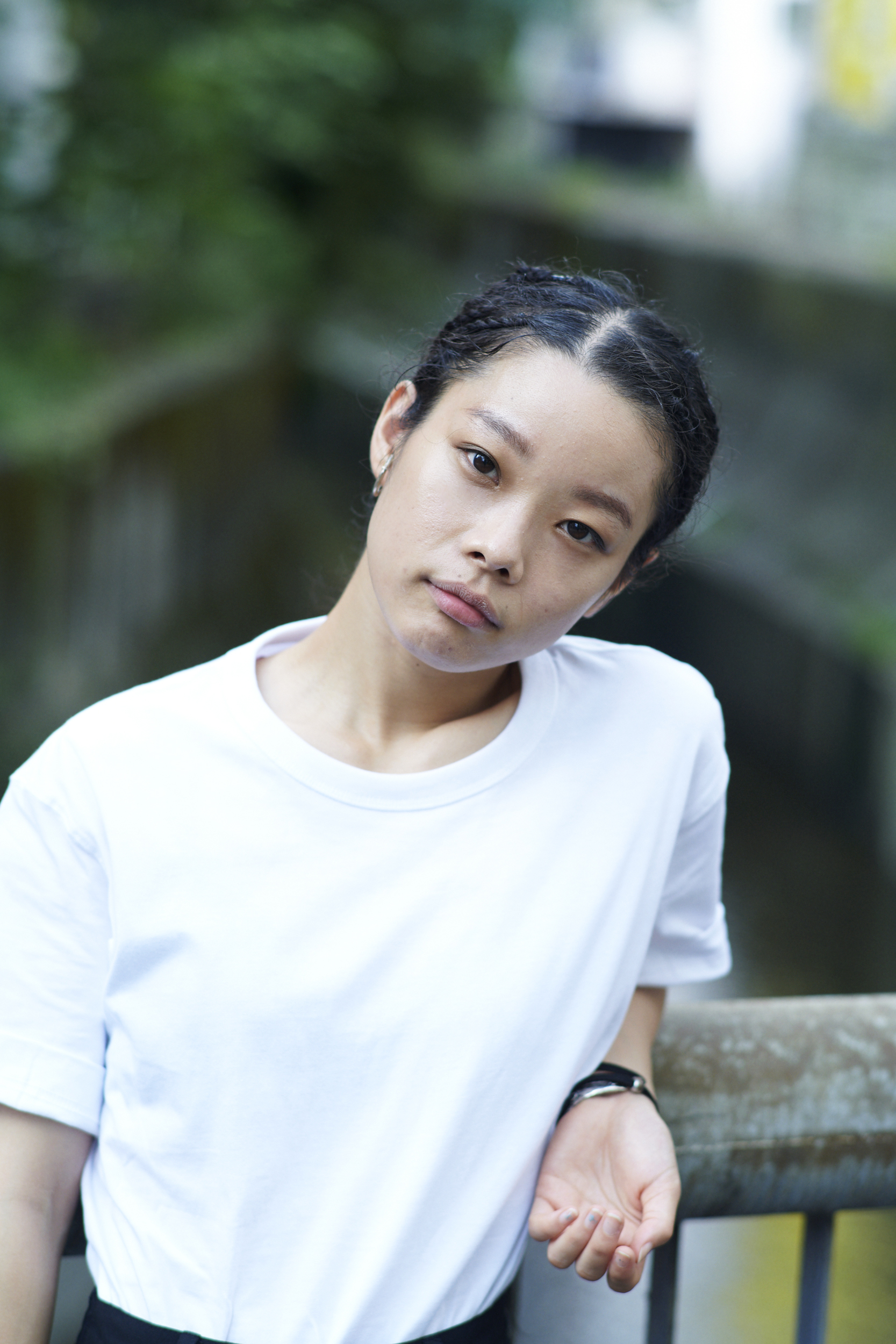
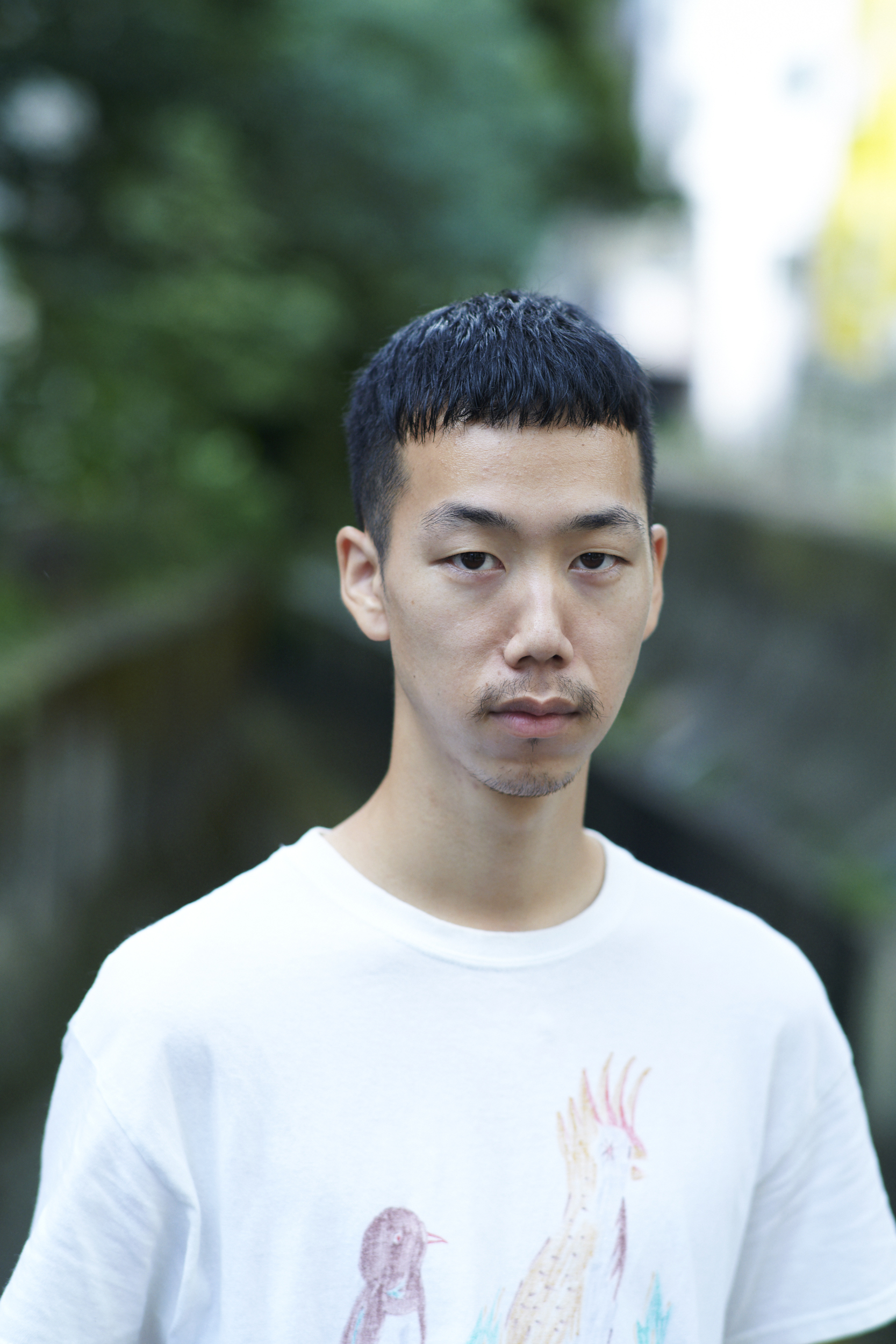
——-It sounds like you’re going to continue this project.
Hanzawa: We made clothes you can’t wear this time, but we want to level up and make clothes people can wear. Ideally, it’d be interesting to study people’s lives reflected in regional characteristics, like learning about which material can be found in which river. It’s like how diverse materials are produced in different parts of Japan.
xiangyu: By taking this project elsewhere, I think we’d be able to compare different rivers to the Shibuya River. I hope we can find more like-minded people in various places, just like the Bunka students.

Photography Masahi Ura
Translation Lena Grace Suda

